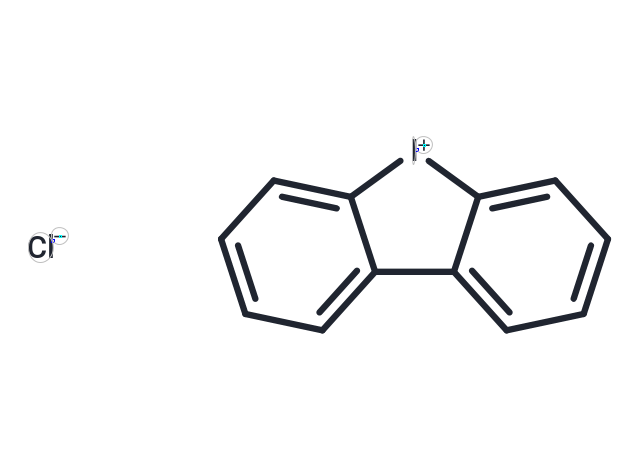Shopping Cart
- Remove All
 Your shopping cart is currently empty
Your shopping cart is currently empty

Diphenyleneiodonium chloride (DPI)(DPI) is an irreversible inhibitor of iNOS and eNOS (IC50 values of 50 nM and 0.3 μM, respectively),and displays broad-spectrum bactericidal activity.

| Pack Size | Price | Availability | Quantity |
|---|---|---|---|
| 5 mg | $38 | In Stock | |
| 10 mg | $61 | In Stock | |
| 25 mg | $109 | In Stock | |
| 50 mg | $198 | In Stock | |
| 100 mg | $343 | In Stock | |
| 1 mL x 10 mM (in DMSO) | $66 | In Stock |
| Description | Diphenyleneiodonium chloride (DPI)(DPI) is an irreversible inhibitor of iNOS and eNOS (IC50 values of 50 nM and 0.3 μM, respectively),and displays broad-spectrum bactericidal activity. |
| Targets&IC50 | iNOS:50 nM , eNOS:0.3 µM |
| In vitro | Diphenyleneiodonium chloride (DPIC), an NADPH/NADH oxidase inhibitor, as possessing potent antimicrobial activity against non-tuberculous mycobacteria.?DPIC exhibited concentration-dependent bactericidal activity against M. fortuitum and synergized with amikacin, ceftriaxone, ceftazidime and meropenem[1]. |
| Cell Research | Whole-cell growth inhibition assays were used to screen and identify novel inhibitors. The hit compounds(Diphenyleneiodonium chloride) were tested for cytotoxicity against Vero cells to determine the selectivity index, and time-kill kinetics were determined against Mycobacterium fortuitum. The compound's ability to synergize with amikacin, ceftriaxone, ceftazidime and meropenem was determined using fractional inhibitory concentration indexes followed by its ability to decimate mycobacterial infections ex vivo[1]. |
| Alias | DPI |
| Molecular Weight | 314.55 |
| Formula | C12H8ClI |
| Cas No. | 4673-26-1 |
| Smiles | [Cl-].[I+]1c2ccccc2-c2ccccc12 |
| Relative Density. | no data available |
| Storage | Powder: -20°C for 3 years | In solvent: -80°C for 1 year | Shipping with blue ice. | ||||||||||||||||||||
| Solubility Information | DMSO: 6 mg/mL (19.07 mM), Sonication is recommended. | ||||||||||||||||||||
Solution Preparation Table | |||||||||||||||||||||
DMSO
| |||||||||||||||||||||

Copyright © 2015-2025 TargetMol Chemicals Inc. All Rights Reserved.